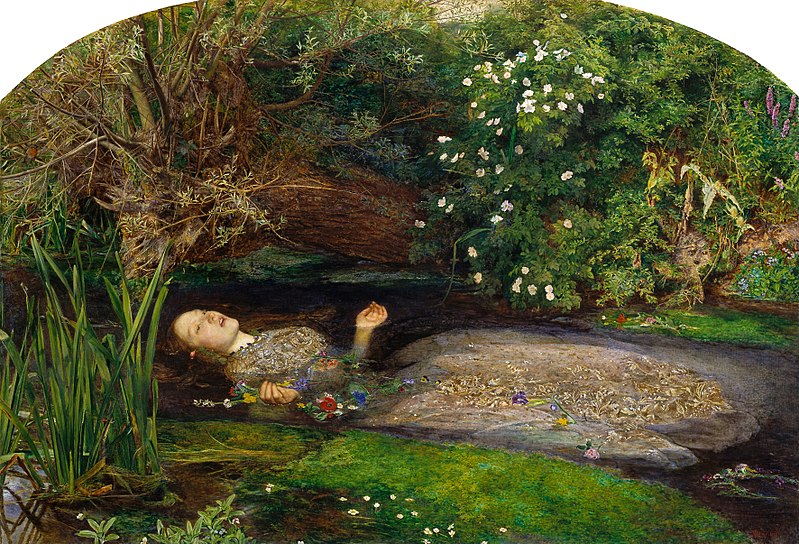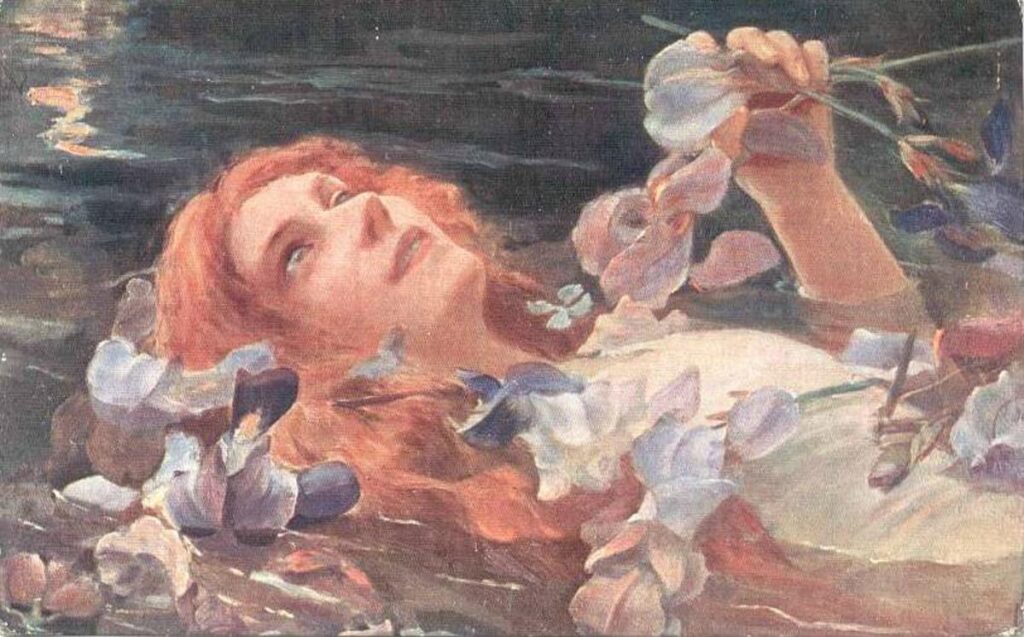Look up at Ophelia from bottom of Lake

During Golden Week, a graduate student studying art history in France was helping out at the attached gallery as an intern.
Saito’s research focuses on late 19th-century art, with a particular interest in the painting “Ophelia,” which depicts a mysterious woman lying on her back, half submerged in a river and floating amongst flowers.
Ophelia, a character in Shakespeare’s “Hamlet,” goes mad when her lover Hamlet kills her father and drowns himself in the river. The scene was depicted by various painters. Not only at that time, but also in the form of paintings, the mysterious Ophelia motif has been cited in various forms of contemporary art.
I was also attracted to this image because of the fact that I also do a place called “Lake”.
This place “Lake” where I am talking to her now is underground and has an image setting of the bottom of a lake, so if you were to see Ophelia here, you would see her from below, as if she were floating.
If I were to do an Ophelia Homage exhibit here, I would project a half-length image of the one immersed in water on the ceiling, with colorful flowers suspended in the air… Ophelia’s setting is a river, so it seems to flow, but this is a lake, so I imagined it sinking and melting gradually (the image expanding and diffusing).
The surface of the water separates this side from that side, while at the same time making them the same and dissolving them.
In this case, the surface of death will eventually separate the body and soul into opposite sides, but since both water and sky are blue, sinking and floating are similar in image. I thought it was beautiful that the two images were gradually separated from the surface of the water that separates the blue and eventually disappeared.
Ophelia’s expression is not visible from the bottom of the lake.

Saito’s favorite Ophelia was painted by Gaston, and she says that compared to the famous Millais painting, Ophelia’s eyes seem to light up and she seems to smile a little, which makes her feel more insane. She also says that Ophelia even sings in this situation.
Ophelia, lying on the surface of the water that divides the two poles, continues to emanate a mysterious radiance that shakes the boundaries and confuses people.
The vivid green of May on the ground overlapped with the greenery surrounding Ophelia.

